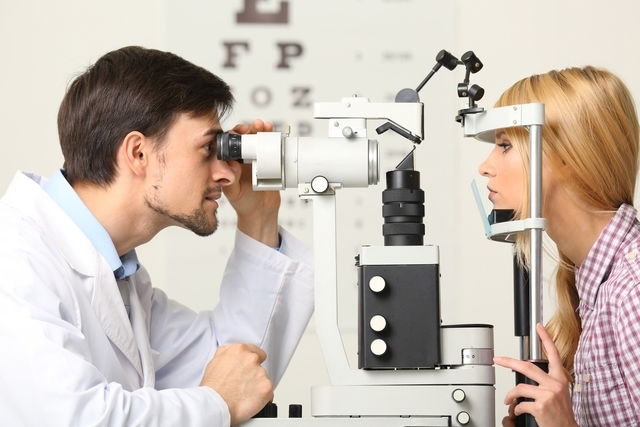Ocular hypertension is when the pressure inside the eye (intraocular pressure) is higher than 21 mmHg. People with ocular hypertension do not usually have any symptoms, which is why it is important to have regular eye exams.
Ocular hypertension is typically caused by a buildup of fluid produced in the eye called aqueous humor. Pressure in the eye increases when there is more fluid being produced than there is draining out. Ocular hypertension is more common in people over 40 years of age and those with hypertension (high blood pressure), diabetes, or myopia (nearsightedness).
Treatment usually involves the use of eye drops to control the pressure in the eyes and decrease the risk of developing glaucoma.

Common symptoms
Ocular hypertension does not typically cause any symptoms, however patients with ocular hypertension are at increased risk for developing glaucoma.
Ocular hypertension that has progressed to glaucoma may present with symptoms like:
- Loss of peripheral vision (tunnel vision);
- Eye pain and/or redness;
- Blurry vision;
- Headache;
- Trouble seeing in the dark;
- Seeing halos;
These vision disturbances may also result in nausea and vomiting.
Confirming a diagnosis
The diagnosis of ocular hypertension is made by an ophthalmologist (eye doctor) during an eye exam, using tests such as tonometry and pachymetry to measure the pressure inside the eye. If the intraocular pressure is higher than 21 mmHg a diagnosis of ocular hypertension is made.
During the eye exam, an ophthalmologist will also perform other tests to rule out glaucoma. These include a visual acuity test, visual field test (perimetry), and an exam of the back of the eye (ophthalmoscopy).
Possible causes
Ocular hypertension results from an imbalance in the production and elimination of aqueous humor, a clear fluid produced in the eye. Buildup of aqueous humor in the eye results in an increase in intraocular pressure.
Ocular hypertension is more common in people over 40 years old and those who have conditions like high blood pressure, diabetes, or myopia. Other risk factors include a family history of glaucoma or ocular hypertension; prolonged use of corticosteroids; and a history of eye surgery or receiving a blow to the eye.
Treatment options
The treatment of ocular hypertension typically involves prescription eye drops to decrease intraocular pressure. Some cases do not require treatment, but will involve monitoring the condition over time with regular eye exams.
Oral medications may also be prescribed to help control the pressure in the eye. Laser treatments or eye surgery may also be indicated.






























